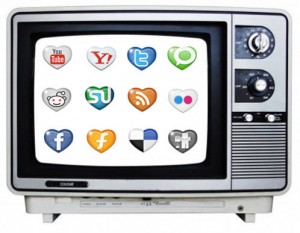Emerging markets drive social TV
August 31, 2012
 People in markets such as China, Brazil and India use the opportunities offered by web-connected television more than those in the UK, US and Germany. This is according to research carried out across thirteen countries by GfK, the consumer research experts. A study by consumer research experts GfK found that western consumers are stuck in an ‘analogue’ mindset, whereas viewers in emerging markets are more likely to exploit the digital capabilities of Connected TV.
People in markets such as China, Brazil and India use the opportunities offered by web-connected television more than those in the UK, US and Germany. This is according to research carried out across thirteen countries by GfK, the consumer research experts. A study by consumer research experts GfK found that western consumers are stuck in an ‘analogue’ mindset, whereas viewers in emerging markets are more likely to exploit the digital capabilities of Connected TV.
GfK’s findings show that, in broad terms, ‘Social TV’ has yet to fully take-off. Globally, just 28 per cent of viewers said that they found programmes that they can interact with to be more interesting to watch. And only a quarter (25 per cent) thought that tweeting and commenting on programmes ‘enhances the viewing experience’. Richard Preedy, Research Director at GfK, comments: “Our findings suggest that broadcasters need to integrate their social elements far more engagingly into the fabric of the programme, to encourage viewers to interact.”
Viewers in countries such as China, Brazil and India are more motivated to interact with programmes than those in the UK, US and Germany. This is indicative of the emerging markets having seen a greater and more rapid uptake of enhanced TV capability, compared to consumers in the markets that are traditionally seen as more developed. They are also likely to use more of the functionality offered by the latest television sets – with three-quarters (75 per cent) of Chinese Smart-TV owners utilising its features in the past month, compared to half, or less, those in the Western markets
Across all markets, the ability to connect to the internet is seen as less important than price, screen size and display technology, when buying a new TV. However, the disinterest in Internet connectivity for TVs is significantly greater in the Western countries, than in the emerging markets. Only 26 per cent of UK and 29 per cent of US consumers say they look out for a net enabled TV set, compared to 61 per cent in India and 64 per cent in China.
But there is hope on the horizon. Market data from GfK shows that the demand for Smart TVs is gaining momentum in the West, with sales in the six biggest European countries increasing by 31 per cent in the first half of 2012.
Richard Preedy adds: “We are seeing the developing countries such as India, Brazil and especially China viewing an increasing amount of content away from a television set, but also using TV in a more advanced way. They combine viewing a programme with increased levels of online activity – giving us a glimpse into how the West will start to move in the coming years. China, India and Brazil essentially are the early adopters at the moment. However, in the coming decade, critical mass will be reached in traditional TV markets such as the UK, US and Germany and the way we all watch programming will be changed forever – finally burying analogue for good.”
The study also shows that discovery is still more important to viewers than interaction: 33 per cent more viewers search for information on the shows they are watching than use social networks to share the experience with friends. GfK therefore argues that programme makers need to focus on viral campaigns and digital bonus content to enhance the viewers’ experience, rather than looking for viewers to enhance their own experience via interaction.
GfK’s findings also suggest intuitive control will be the next big growth area. They found that 67 per cent are interested in touch and gesture TV control and 43 per cent want to control their TV using something other than the traditional remote control. With smartphones developing beyond the traditional boundaries of a mobile phone, it is likely that this technology holds an advantage over TV in having already defined its usability credentials in terms of touch and gesture control.
Preedy continues: “While TV does not show any signs of losing its position as the top content-viewing device, other technologies are starting to catch it. The growth of online catch-up and streaming services makes devices such as laptops, tablets, smartphones and games consoles far more accessible in terms of content delivery and therefore more appealing to viewers looking for content rather than a mechanism for consuming it. As a result of this the technology manufacturers and OS developers could hold the key to future content delivery with viewers looking towards the most convenient and intuitive method of consuming this content across their device ecosystem.”
